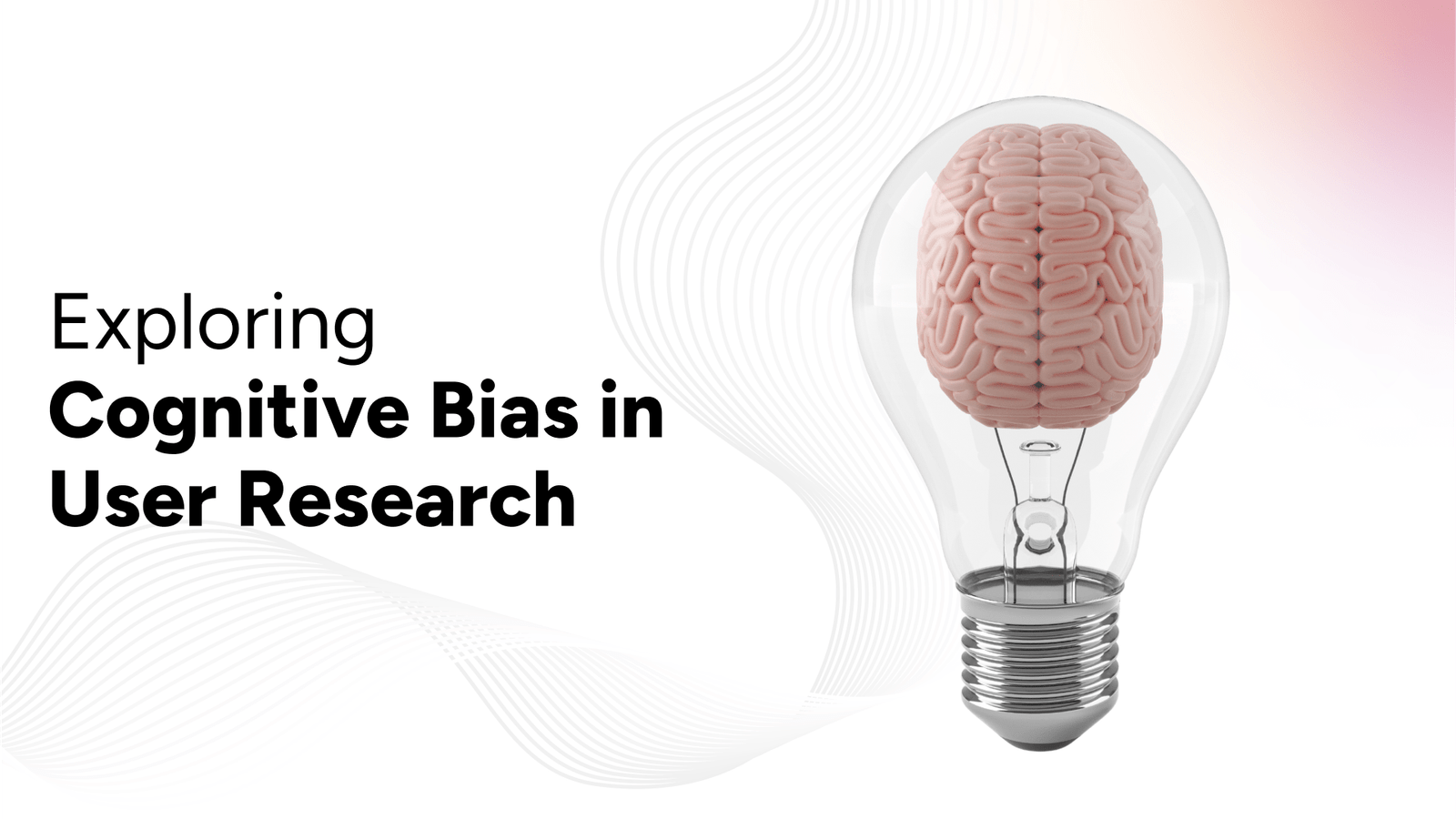Most designers understand the crucial role of user research in creating exceptional user experiences. However, even with thorough research, cognitive biases—mental shortcuts that affect how we interpret information—can distort results and harm digital products. These biases are often unconscious, leading people to believe they are less biased than others, even if they are not.

Cognitive biases can impact results and influence design decisions. By being aware of their own cognitive biases and employing effective strategies to mitigate them, designers can conduct research that accurately reflects user needs, leading to better product designs and improved customer satisfaction. In this article, we have discuss five types of cognitive biases in user research and ways to overcome them for more successful products.
Five types of cognitive biases in user research
1. Anchoring effect
The anchoring effect happens when the first piece of information a person receives influences their decisions. For example, seeing a discounted price can make an item seem like a good deal, even if it’s still expensive. In user research, anchoring can occur when multiple-choice questions guide users to choose certain answers. To reduce anchoring, allow users to enter their own estimates instead of providing predefined options. For qualitative feedback, avoid leading questions that suggest a specific answer.
2. Confirmation bias
Confirmation bias occurs when people seek information that confirms their existing beliefs and ignore information that contradicts them. In user research, designers might prioritize feedback that supports their opinions while disregarding critical feedback.
For example, a design team might receive feedback suggesting that a website’s onboarding process is too long. If the team believes the onboarding process is fine, they might ignore this feedback. By using techniques like affinity diagrams, which group feedback by themes, designers can see the volume and importance of different feedback points, helping them recognize and address biases.
Another method to avoid confirmation bias is the Six Thinking Hats technique. This approach assigns team members different roles—such as rational, positive, cautious, emotional, creative, and managerial—during brainstorming sessions. This ensures a balanced view by encouraging team members to think from various perspectives and check each other’s biases.
3.Peak-end rule: Remembering highs and lows
The peak-end rule means people judge experiences based on the most intense moments and the end, rather than the entire experience. For example, if users have a negative experience at the end of their journey, they might rate the whole experience poorly. To get comprehensive feedback, ask about each step of the user journey. This approach ensures that users consider all elements of their experience. Grouping questions into sections can also help users focus on specific features. Randomizing questions within sections can further mitigate order effects.
4. Order effect: Influence of question sequence
The order effect occurs when the sequence of questions or options affects responses. People tend to choose the first or last options presented, ignoring those in the middle. To counter this, randomize the order of survey questions and response options. This helps ensure that responses are more reflective of true user opinions rather than the order in which options are presented.
5.Observer-expectancy effect: Influencing user responses
The observer-expectancy effect occurs when a researcher’s expectations subtly influence participants’ responses. For example, asking, “Does our product provide better lifestyle benefits than others?” suggests a positive answer. Rephrasing it to, “What are the positive lifestyle outcomes of our product compared to others?” makes it more neutral. To avoid this bias, use neutral language in questions and instructions. Ensure that questions do not contain assumptions and are open-ended, allowing users to provide unbiased feedback.
Protecting research from biases
Cognitive biases are a natural part of human thinking, but designers can take steps to minimize their impact on user research. By being aware of biases and using strategies like those mentioned above, designers can gather more accurate and useful feedback, leading to better products and happier users. Understanding and mitigating cognitive biases is essential for any designer aiming to create products that truly meet user needs. By incorporating these strategies into your research process, you can ensure that your findings are reliable and your designs are effective.

